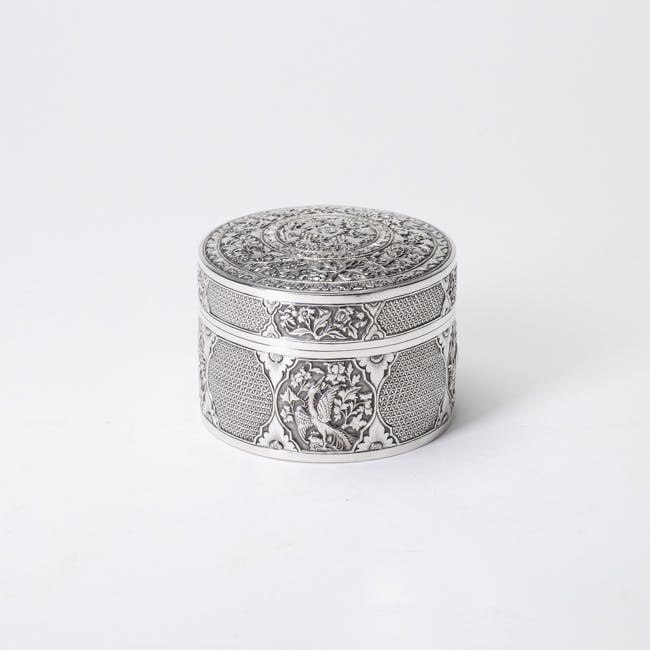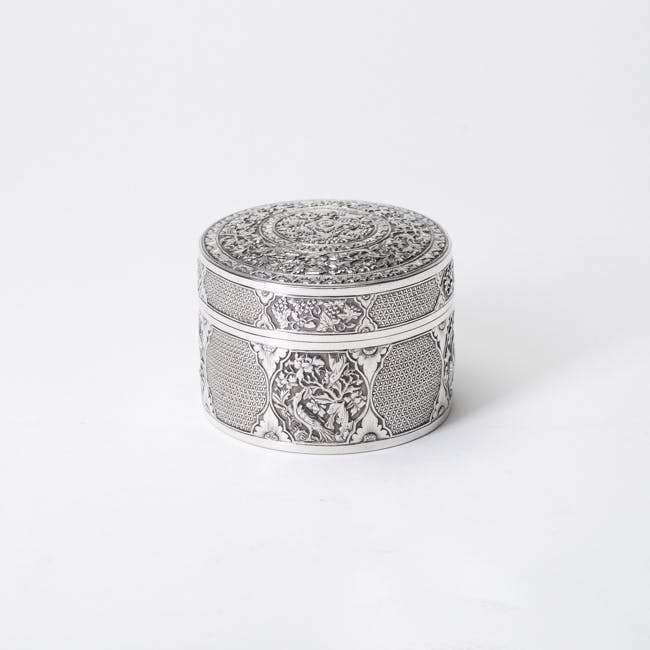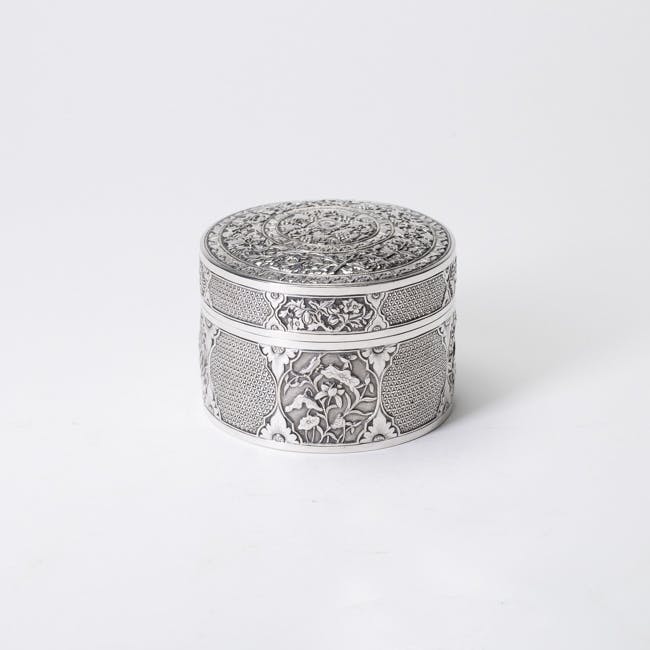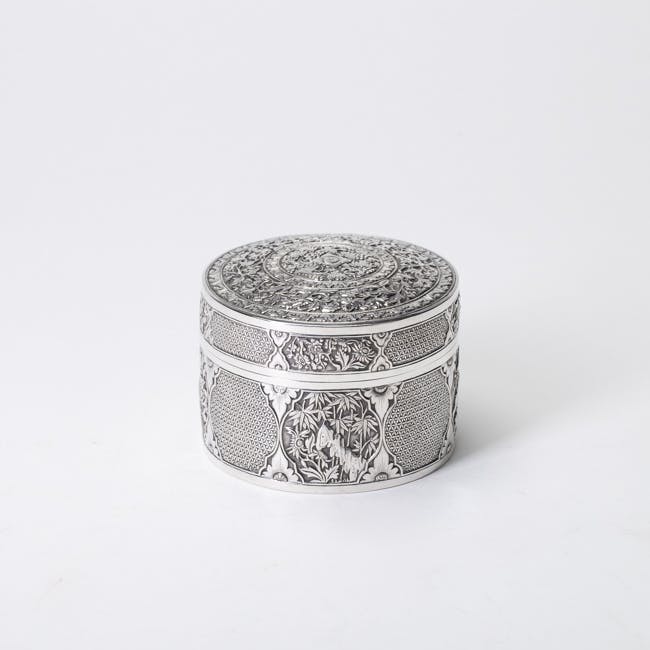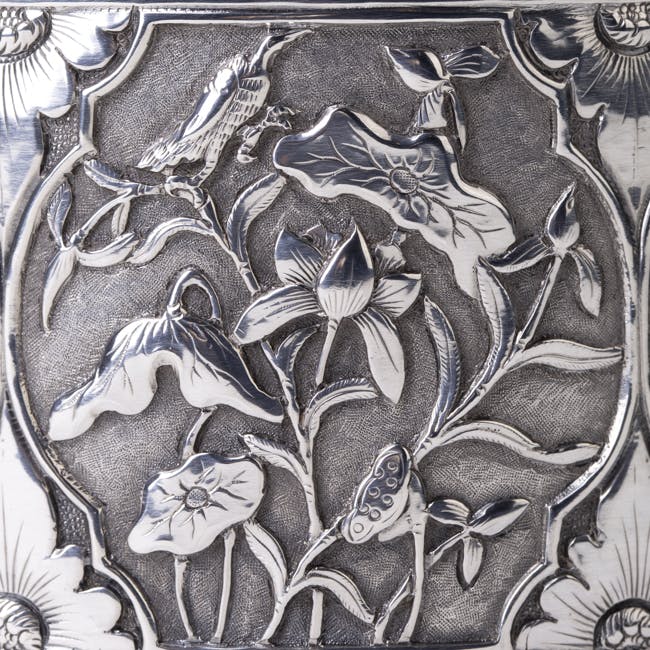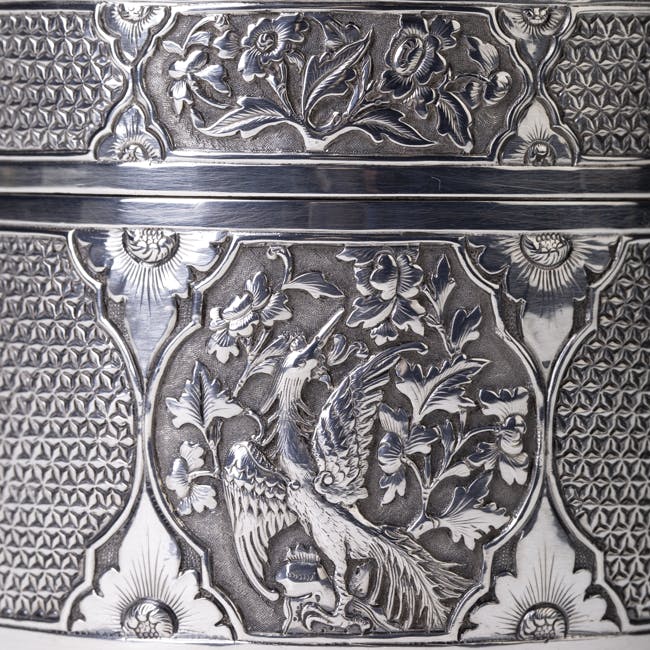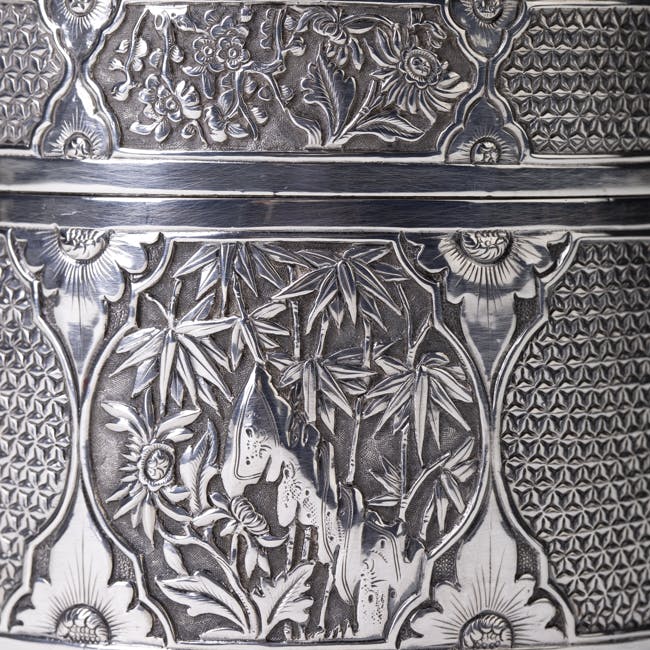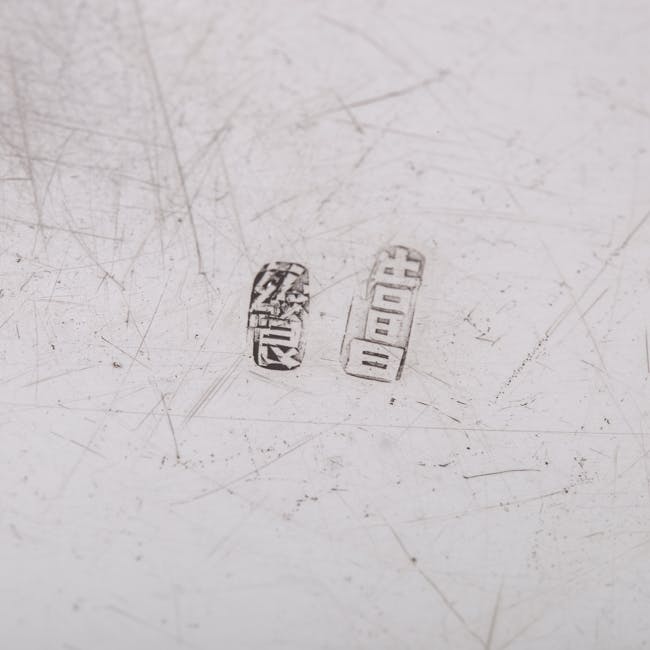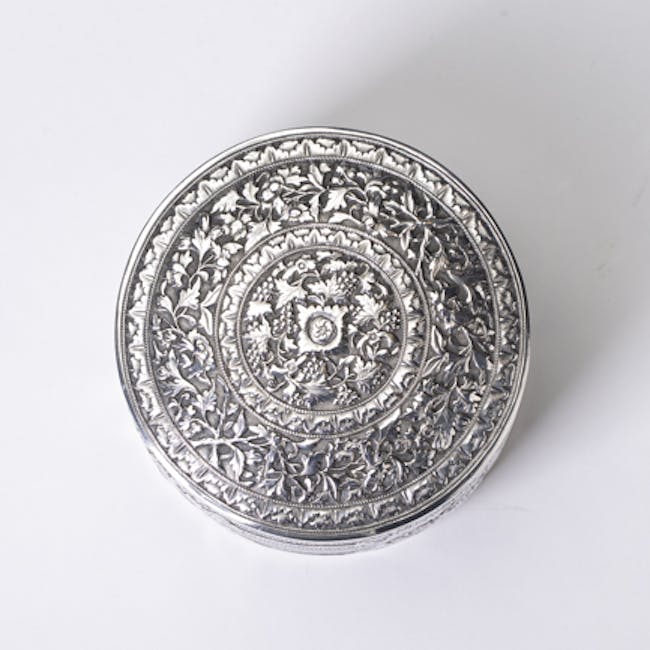Chinese Export Silver are often functional objects with European shapes, to which the Chinese craftsmen added Chinese motifs, such as the dragon and phoenix, scenes of everyday Chinese life, or natural elements such as bamboo or blossom.. The result is a charming fusion between the East and West.
From as early as the 5th century BC, the Chinese used both silver and gold as decorative inlays on ritual vessels, garment hooks and chariot fittings. By the 8th century, silver techniques developed and repoussé (hammered) objects began to appeared: goblets, cups, bowls, small boxes, hairpins and scissors. China trade routes, also had an influence on the decorative motifs on silverware, Chinese forms showing direct influence from the Sassanian Empire (present-day Iran). By the Song Dynasty (960-1279), the forms reverted to a more domestic taste, taking on simple, ceramic shapes.
Even though the Chinese began exporting porcelains to Persia in the 14th century, works of art in silver were unknown outside of China until the 17th century, when the Dutch and others began exporting small pieces of domestic Chinese silver to Europe. The earliest recorded example of Chinese silver in the West appeared in England in 1680. Even though Chinese export porcelains in Western shapes were not made much before 1700, it was well into the 18th century that silver followed suit. One such example of export work created for the Indo-Persian market is a splendid silver gilt rose water sprinkler with a separate, floating cage of fine filigree work.
Similar examples are at the Victoria and Albert Museum and at Powys Castle, where they were introduced by Clive of India. These are extremely rare pieces are fairly unstudied at present.
Chinese silver in Western forms dates only from about 1785, little is known about production before that date. Being cheaper to have silver made in Western (mainly English) shapes than to buy the original in England, the early first period (1785-1835) of Chinese production was devoted to creating English forms. Canton was the main production center, for all export wares.
The second period of export silver (1835-1850) reflects the burgeoning presence of English and American trade with China. This was a period of mixed styles with heavy influence from the taste for the rococo revival predominant in England and America. Following the Opium Wars and the ensuing 1842 and 1843 trade treaties, further ports opened the ports of Fuzhou, Amoy, Ningpo and Shanghai. Americans and English poured into China and brought their tastes with them. New shapes emerged such as large wine goblets, dishes and large covered cups. Even though the shapes and dominant decorations reflected European neo-rococo taste, details in Chinese taste were rife.
The third period (1850-1885) was dominated by Chinese style pieces, in which European forms were reworked into Chinese taste and the decoration was purely Chinese, relying heavily on repoussé and chased work. From about 1885 to 1900, the production of these Chinese style pieces exploded, mainly in the form of small articles such as picture frames, cups, small boxes and the like.
After 1900, particularly in Shanghai, blatantly Western forms catered to Western residents and to the Western market. These forms included cigar boxes, tea sets, cocktail shakers and the like, all of simple form, but decorated in high relief.
